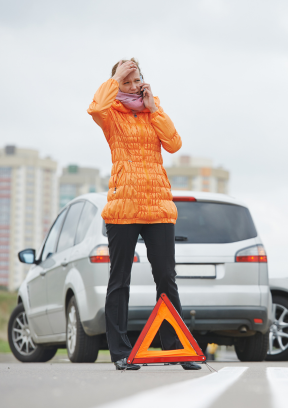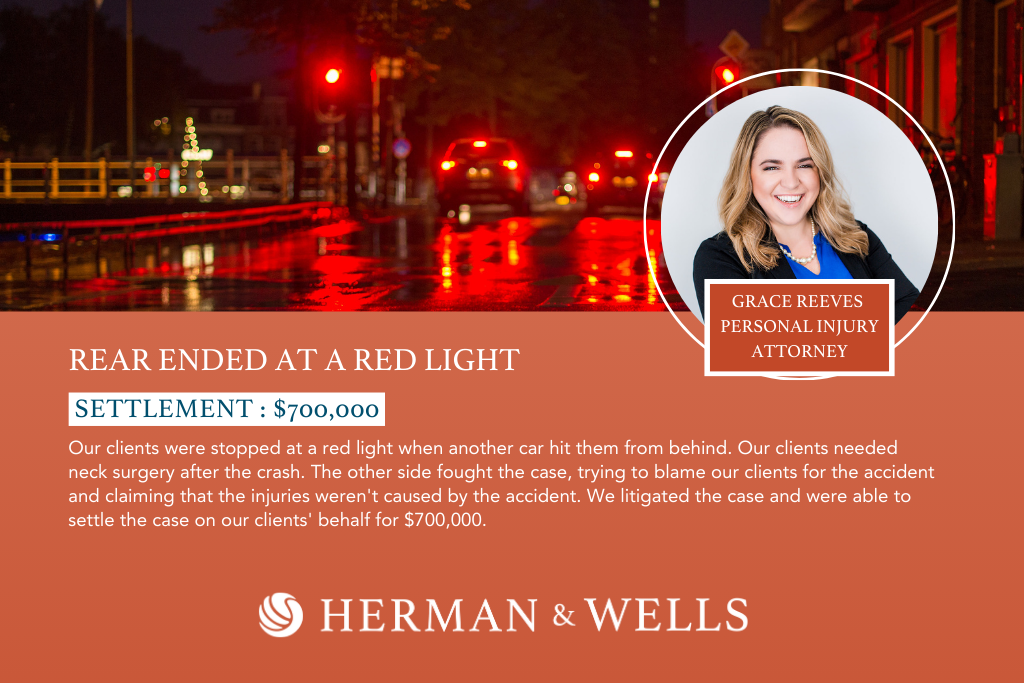Talk to an Attorney
Table Of Contents
If you’ve been in a car crash in Florida, you know that the aftermath can be incredibly stressful. In addition to dealing with medical bills and property damage, it’s important to find the right representation and legal help — fast. That’s where a Florida car accident lawyer comes into play.
Our experienced personal injury attorneys have the experience necessary to make sure you get the compensation you need for your injuries and other damages incurred due to a Florida car wreck.
Whether you were T-boned, rear-ended or are facing uninsured motorist disputes, the qualified team of car accident lawyers of Herman & Wells will be there every step of the way for advice and counsel on how best to pursue your claim successfully.
Searching for experienced personal injury lawyers in Florida? Our law firm has experienced attorneys that are ready to help people in Pinellas Park, St. Petersburg, Tampa, Clearwater, Seminole, Palm Harbor, Lakewood Ranch, Bradenton, and Sarasota.
Call (727) 821-3195 for a free consultation today. We look forward to helping you!

If you’ve been involved in a car crash in Florida, it’s important that you contact an experienced attorney as soon as possible. Insurance companies prefer when you are unrepresented in a Florida car accident claim, as statistics have demonstrated that individuals with legal representation received higher compensation than those without. Don’t let this happen to you, hire a Florida auto accident lawyer as soon as possible after your accident.
Our team of attorneys have decades of combined experience handling thousands of car accident claims and they can provide the advice and support you need to get you compensated for your damages.
After any accident, the first step is to prioritize your safety. If you have a passenger in your car, make sure they are also safe and that you or your passenger have not been injured. If someone else is involved in the accident, check to see if they are okay then call 911 immediately.
Call 911 to respond to the scene and document the accident with an official police report. The police will also take statements from you and other drivers, as well as witness statements if available. This will be useful later when submitting your car accident claim.
Gather driver’s license information, insurance details, contact numbers, and any other relevant data from all parties involved in the car accident.
Take pictures of vehicle damage, skid marks on the roadways, current weather conditions, and debris at the scene of the crash; collect eyewitness statements as well if possible. These details strengthen your Florida car accident claim and improve your chances of getting a favorable outcome. The more evidence you have the clearer your claim appears to the insurance company.
See a doctor immediately after a car accident regardless of whether you feel injured or not; some injuries may take time to manifest themselves, so it is important that you are examined right away for proper diagnosis and treatment recommendations from a team of medical professionals.
Speak with an experienced Florida auto collision lawyer who can provide advice on how best to handle your claim so that you are sufficiently compensated for the damages you’ve suffered due to another driver’s negligence or recklessness.
They can gather all of your evidence, police reports, witness statements, etc, and submit your car accident claim on your behalf. They will even handle all communication with all parties so you won’t have to.

If you or a loved one have been severely injured in a Florida car accident, you may be entitled to compensation for medical expenses, lost wages, emotional distress, pain and suffering, and more.
Contact an experienced Florida motor vehicle accident lawyer to discuss the details of your case in order to get the legal help you need. Our team of attorneys have extensive experience handling Florida car accident claims and they will fight to make sure you get the compensation you deserve.
No, you don’t always have to file a lawsuit in order to get compensation for your damages after a car accident. It is possible to receive an insurance settlement without going to court; however, in many cases, filing a personal injury lawsuit may be the only way to ensure that you get the maximum amount of compensation for your injuries.
Our experienced Florida car wreck lawyers can provide the advice and support you need to get you the best possible outcome.
Florida uses a “no-fault” insurance system which requires that you have Personal Injury Protection (PIP) coverage in order to receive compensation for medical costs, lost wages, and other damages.
Additionally, Florida has a statute of limitations on filing personal injury lawsuits which sets the time limit to two years from the date of the accident. After this two year period, you may not be able to file a lawsuit and receive compensation. A Florida auto accident lawyer will make sure you adhere to all deadlines and stay within time limits for your claim.
Common causes of car accidents in Florida include:
The most common injuries caused by motor vehicle collisions in Florida include:
It is important to remember that even if you feel unharmed after a car accident, it is still best to seek medical attention for a proper diagnosis and recommendations for treatment. As mentioned earlier injuries often manifest later on.
If you fail to seek medical attention early on, it can be used against you later when filing a car accident claim. The insurance company can argue that your injury did not come directly from the accident because you delayed seeing a doctor.
When looking for a car accident lawyer in Florida, it is important to ask questions such as:
Asking these questions give you a better idea of the quality of services you will receive and help you make an informed decision. Most importantly, you should feel comfortable speaking with them.
If they rush you and talk down to you with a lot of legalese you should consider looking for a different attorney. At the end of the day, it is important to find an experienced Florida car accident attorney who will work closely with you and provide dedicated legal representation tailored to your specific needs.
A lawyer with extensive trial experience will be better equipped to handle your case and fight for the maximum compensation. They understand the complexities of personal injury law, know how to negotiate effectively with insurance companies, and have experience in dealing with all aspects of a Florida car accident case.
If you hire a lawyer with little to no trial experience you run the risk of not receiving the full amount of compensation that you deserve.
If you have lost a family member in a car accident, you may be eligible to file a wrongful death lawsuit. A wrongful death lawsuit allows surviving family members of the victim to seek compensation for medical expenses, funeral costs, lost wages and other damages. Our Florida auto
accident lawyers can provide the advice and support needed for filing this type of claim.
At Herman & Wells, we understand the trauma and distress that a car accident can cause, and we are committed to providing you with the representation you need to navigate the complex legal process. Our attorneys have extensive experience dealing with car accident claims in Florida, and we are ready to help you fight for the compensation you deserve.
Don’t let the aftermath of a car accident overwhelm you – allow our team to handle your claim while you focus on recovery. Call today to schedule a free consultation with a Florida car accident lawyer.